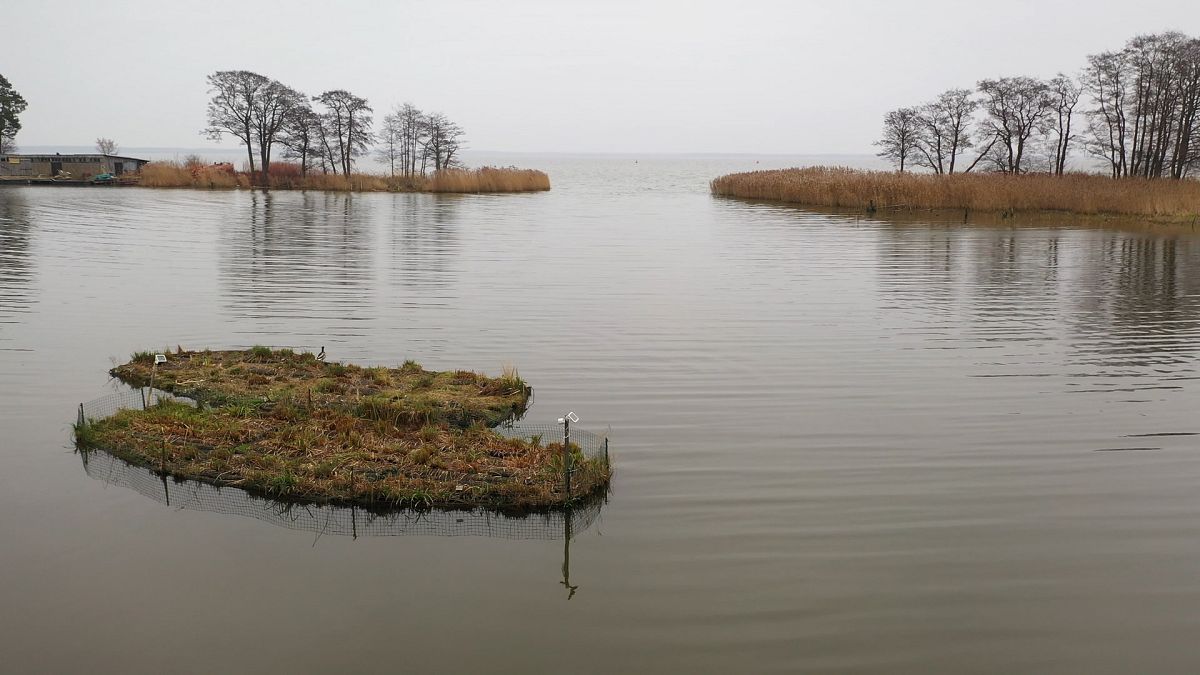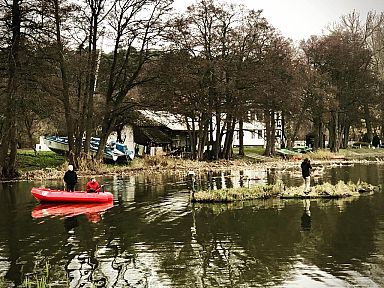Like many other places in the southern Baltic, the Curonian Lagoon in Lithuania suffers from an excess of nutrients. But artificial floating wetlands are helping.
Like many other places in the southern Baltic, the Curonian Lagoon in Lithuania suffers from an excess of nutrients. But these artificial floating wetlands are helping. They’re made up of common reed and willow. As the plants grow, they’re nourished by the excess nitrogen and phosphorous that’s present in the rivers as a result of eutrophication.
Arturas Rathinkovas-Bathiukas is head of the LiveLagoons project behind the initiative.
“The nitrogen mostly comes from agriculture,” he says. “And the phosphorus mostly comes from municipal wastewater. We have calculated how much of the nutrients one island can remove. So in the end one island removes through the year the equivalent of the nutrients produced by two to three families.”
The project has a grant of €1.2 million euros, €1 million of which comes from the European cohesion policy.
Live Lagoons has installed different types of floating wetlands in 3 southern Baltic countries: Germany, Poland and Lithuania. One has been placed in the urban canal that flows into the Klaipeda lagoon.
Jolanta lives nearby. To begin with, she was surprised when she saw the floating object.
“The first time I noticed it, I thought that maybe it was supposed for birds to have their nest there,” she says .”And yes, then I thought about it like a kind of experiment or something like that.”
Jurate Lesutiene is a researcher at the Marine Research Institute in Klaipeda, where samples from all the pilot wetlands in the project are analyzed.
Once a year she helps harvest the plants and flowers from the floating islands. The stems and leaves have developed thanks to the nutrients. This is one way they fight the nutrient and pollution excess, but it’s not the only one.
“The second way is the underwater part,” she says. “Which contains the roots and the microorganisms attached to the roots of the plants. And they process the organic matter and nutrients in a way that they can be removed into the atmosphere or burrowed into the sediments.”
Biodiversity benefits
According to scientists, the clarity and biodiversity of the waters surrounding the artificial islands have improved, with fish and birds finding shelter and food.
“The biodiversity found within the islands was twice as high as the neighbouring habitats,” says Rathinkovas-Bathiukas.
Several EU countries have shown interest in the Live Lagoons floating wetlands.

